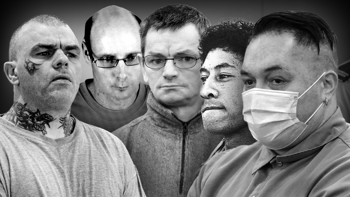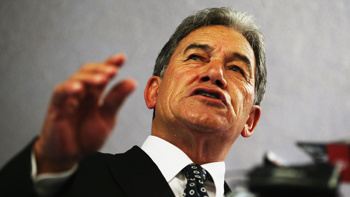A controversially defaced panel displaying the English version of the Treaty of Waitangi has been removed from Te Papa after months on display.
The panel, part of the museum’s “Signs of a Nation” exhibit, was damaged two weeks before Christmas when a group of Te Waka Hourua protesters - disguised as workers wearing hi-vis and hard hats - defaced it.
Together they worked to redact entire phrases of Hobson’s translation, dousing the panel in black spray paint and damaging the surface with an angle grinder. The scene was dramatic, with one protester abseiling from the ceiling to inflict the damage.
Police arrested 12 people. A 29-year-old man was charged with intentional damage, obstructing police, and breach of bail. A 53-year-old woman was charged with intentional damage, and a 46-year-old man and 52-year-old woman were both charged with breach of bail.
Eight arrested for trespass were escorted outside and released without charge.
The defaced panel was still on display in Te Papa yesterday, but by this morning it was gone.
In its place stands a digital display, with two smaller information panels alongside it, describing the protest action and saying the space will be renewed.
 The new-look "Signs of a Nation" exhibit at Te Papa. Photo / Ethan Manera
The new-look "Signs of a Nation" exhibit at Te Papa. Photo / Ethan Manera
In a statement, Te Papa confirmed the defaced panel was replaced with a new temporary display overnight, which will remain in place while the museum embarks on a “full-scale transformation” of the space.
“The temporary display features a large-scale video projection, highlighting the differences between te Tiriti in te reo Māori and Captain William Hobson’s 1840 English version, and points to a 1988 translation by Professor Sir Hugh Kawharu, which is considered much closer to the understanding of Māori who signed te Tiriti.”
Signage in the exhibition references the 2023 protest action. Other elements of the exhibition remain as they were, including the panel of te Tiriti in te reo Māori and the taonga on display.
The change to the exhibition space was made with the support of Mana Whenua.
Te Papa co-leaders Kaihautū Dr Arapata Hakiwai and Tumu Whakarae Courtney Johnston said the digital display would be valuable for visitors from Aotearoa and abroad.
”This digital display will help visitors deepen their understanding and foster informed conversations. Our focus now is on the process to develop the permanent exhibition.
”We are looking to totally transform the space to create an experience of te Tiriti that is relevant for our audiences today, and in the future.
”This is an exciting opportunity for the nation to have a conversation about our history, our present and our future, particularly as we look towards the 200th anniversary of te Tiriti o Waitangi in 2040. Involving iwi, academics, experts and communities will be essential to create an exhibition that reflects Aotearoa New Zealand today.”
Callum Kātene, Chair of Te Rūnanga o Toa Rangatira said Ngāti Toa was supportive of Te Papa’s desire to revisit and redesign the exhibition.
“The meaning and relevance of our founding document is highly topical right now, so providing a fresh view to inform contemporary conversations is important. Just as important is the inclusion of a wide representation of relevant voices, such as Tīriti signatory representatives and historical and other academic experts.”
Treaty of Waitangi Negotiations Minister Paul Goldsmith had been advocating for the exhibition to go back to how it was before the demonstration.
In a prior statement to NZME, Goldsmith said “I have made clear my view as Minister that vandalism of any part of the museum’s collection is not acceptable, as well as my expectation that the exhibition will be restored.”
Documents released to the Herald under the Official Information Act show museum officials going back and forth about the potential removal of the panel.
The museum’s head of communications, Kate Camp, had sent out reputational advice on the idea to either remove the panel or keep it on display, as decisions were still in the works. Keeping the defaced panel visible was said to potentially spark an increased “security risk” and could bring about more difficult conservations for staff members.
However, in the same document, seen by the Herald, Camp questioned whether keeping the panel up on display could create more conversations about Te Tiriti o Waitangi, suggesting the damage itself was historically significant.
In communications to Te Papa staff, Camp saw the protest activity itself as a “critical moment” in the evolution of the museum.
The removed panel will be stored by the museum. No decision has been made about its future.
Azaria Howell is a Wellington-based multimedia reporter with an eye across the region. She joined NZME in 2022 and has a keen interest in city council decisions, public service agency reform and transport.
This article was originally published on the NZ Herald here.
Take your Radio, Podcasts and Music with you









